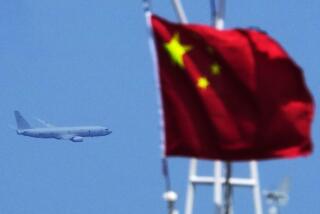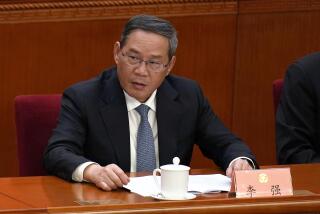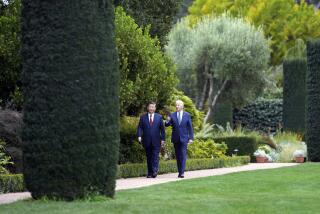China’s TV Coverage Misses the Big Picture
- Share via
BEIJING — For days, U.S. media coverage of Chinese President Jiang Zemin’s visit has focused on the intense debates about such serious issues as human rights. As a sideshow, the media have spotlighted a Communist leader who has danced, joked and generally tried to offset his image as a colorless technocrat.
But the world’s largest television audience--the 800 million Chinese who regularly watch the evening news on China Central Television Station, or CCTV--has seen a very different picture.
CCTV’s sanitized report on the post-summit news conference Wednesday with President Clinton and Jiang omitted the American president’s pointed remarks on human rights, as well as both leaders’ views on Tibet and the 1989 crackdown against protesters in and around Beijing’s Tiananmen Square. CCTV’s otherwise detailed coverage of the summit also failed to mention a key agreement--China’s pledge to stop selling nuclear technology to nations such as Iran that are viewed by the United States as “rogue” states.
*
Outside the White House, Chinese camera crews focused on the state honors--the red carpets, motorcades and honor guards--while shutting out images of hundreds of human rights protesters and celebrities rallying across the street from the White House in Lafayette Park.
“Chinese are used to reports that show only the bright side,” commented a Beijing employee of a U.S. corporation that has access to CNN’s satellite broadcast of the summit. “But allowing people to see this positive dialogue would not have hurt China.”
As with most important state visits, CCTV’s evening news anchors accompanied Jiang’s entourage, kicking off the nightly news from in front of the White House and on Capitol Hill. Meanwhile, Chinese reporters interviewed a not-so-random sampling of Americans, from Washington pedestrians to former Secretary of State Henry A. Kissinger and Jiang’s host at Harvard University, Asia expert Ezra Vogel. All of them offered upbeat assessments of the summit and Sino-U.S. relations.
During Jiang’s trip, Chinese media also have capitalized on historical themes familiar to Chinese audiences. Jiang met students from a Hawaiian high school once attended by early Chinese revolutionary figure Sun Yat-sen. And, at a time when China fears a resurgence of Japanese militarism, Jiang solemnly laid a wreath at Pearl Harbor.
*
Chinese newspapers also have played up Jiang’s meetings with Chinese American communities on each stop of his tour, at which he has struck such patriotic themes as the “reunification of the motherland” and pride in China’s resurgence.
Issues aside, analysts say Chinese media have been careful to polish Jiang’s domestic image as a high-powered statesman, as a reaper of international respect for China’s growing geopolitical clout. This has meant denying Chinese audiences a glimpse of their 71-year-old leader dancing the hula or swimming at Waikiki beach in Hawaii.
“Why would they show us these things?” asked a young scholar. “Our media never report on what these leaders do aside from work.”
But in a touch of exotic Americana, Chinese newspapers showed Jiang touring Williamsburg, Va., wearing a colonial-era three-cornered hat. The image seemed especially bizarre in China, where a recent survey found that people consider the U.S. the world’s third-most mysterious nation or state, behind only Egypt and the Vatican.
More to Read
Sign up for Essential California
The most important California stories and recommendations in your inbox every morning.
You may occasionally receive promotional content from the Los Angeles Times.










